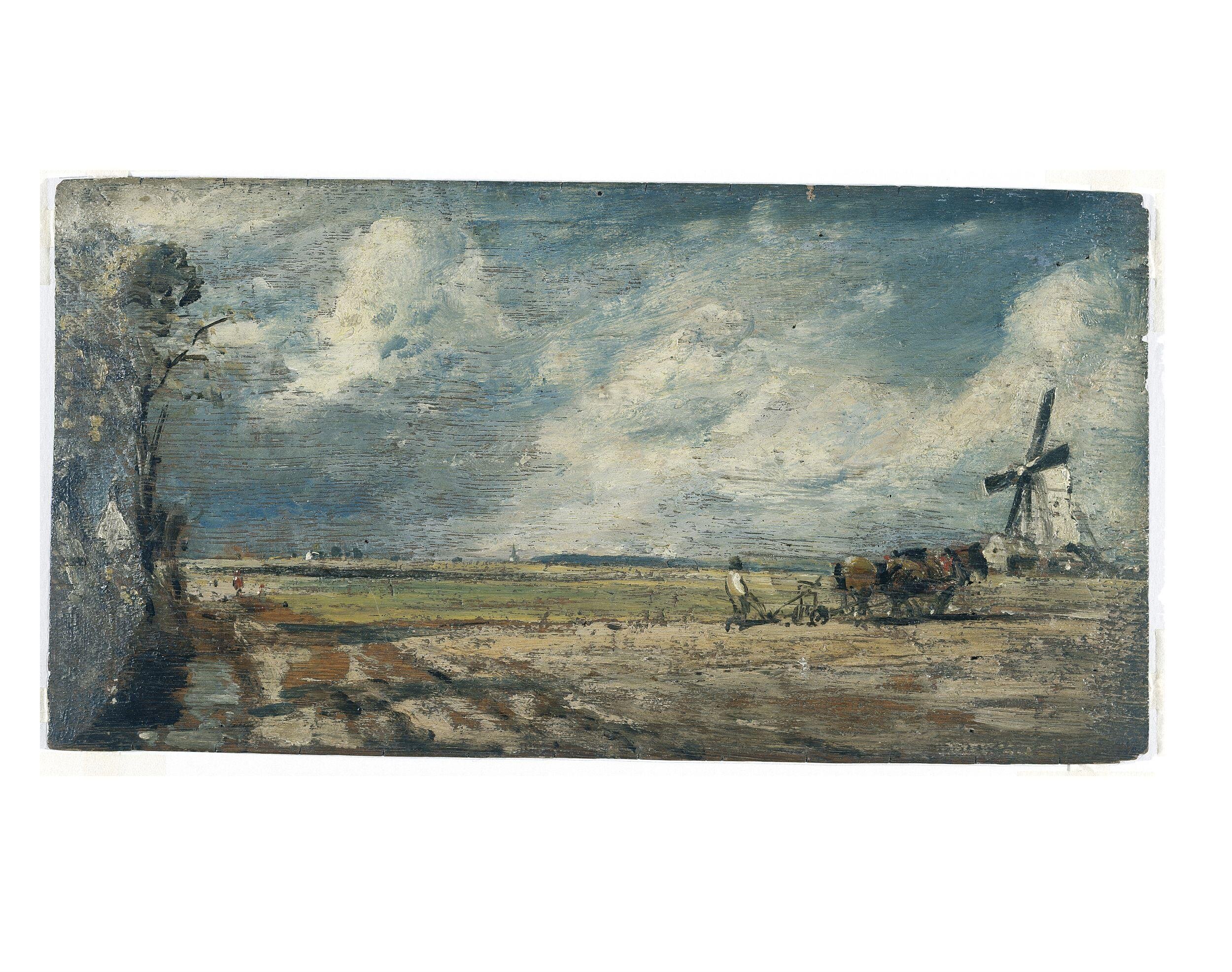Spring on East Bergholt Common
The landscape shows two horses and the windmill on the heath at ‘Windmill Bank’, owned by Golding Constable, the artist’s father. This is where Constable had worked after school, teaching him to study the skies to predict the wind conditions and trim the sales appropriately. This proved invaluable when it came to capturing the skies in these Suffolk paintings for which he became famous in adult life.
- 17
- 1814
- 19cm x 36.2cm
- V&A
- Oil on Paper
- 45
- Oil on Paper, 1814, 19cm x 36.2cm, V&A
- Well Known
- 51.97403,1.03023
Details
Documents show this to have been painted around 1814. However. East Bergholt realigned the land on the heath for ‘enclosure’ in 1817 and the heath was ploughed for the first time which certainly contradicts the date.
Constable included this windmill in many of his paintings including ‘Golding’s Kitchen Garden’ 1815 painted from the gardens to the rear of East Bergholt house, across the Great Field, and over the Donkey Track to Windmill Bank.
The exact date that the windmill disappeared is unknown, but sometime between ‘enclosure’ in 1817 when the road system was changed on the heath by landowners, and 1837 after Constable’s death.
Donated to the V&A by Isabel Constable, daughter of the artist in 1888
*Isabel Constable was the last surviving daughter of the painter and gave the contents of her father’s studio to the Victoria & Albert Museum, making them the principal collector of Constable’s work which included 395 oil paintings, sketches, drawings, watercolours and sketchbooks.
- 17
- 1814
- 19cm x 36.2cm
- V&A
- Oil on Paper
- 45
- Oil on Paper, 1814, 19cm x 36.2cm, V&A
- Well Known
- 51.97403,1.03023

